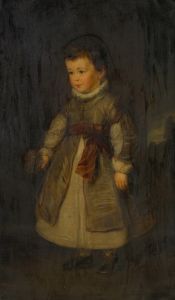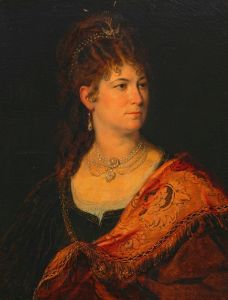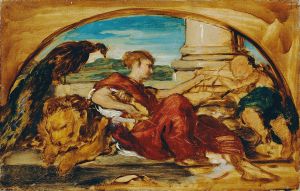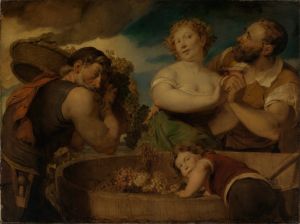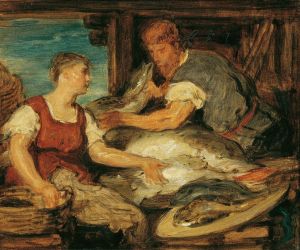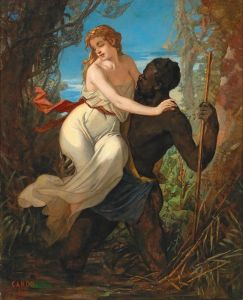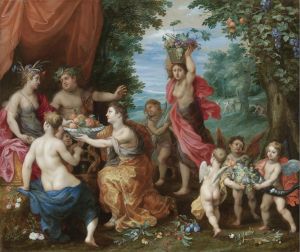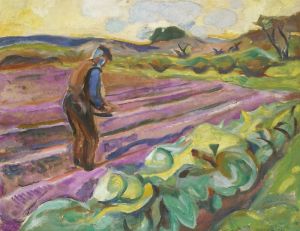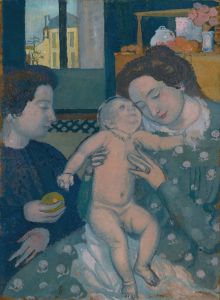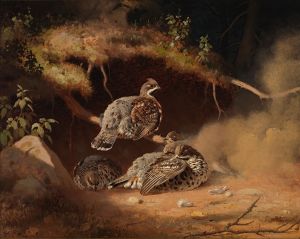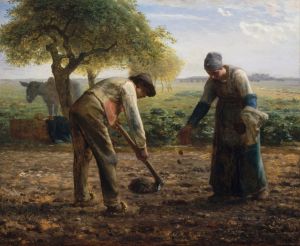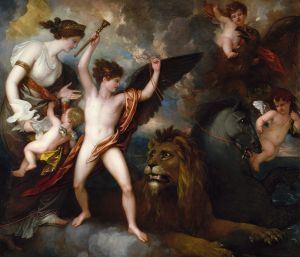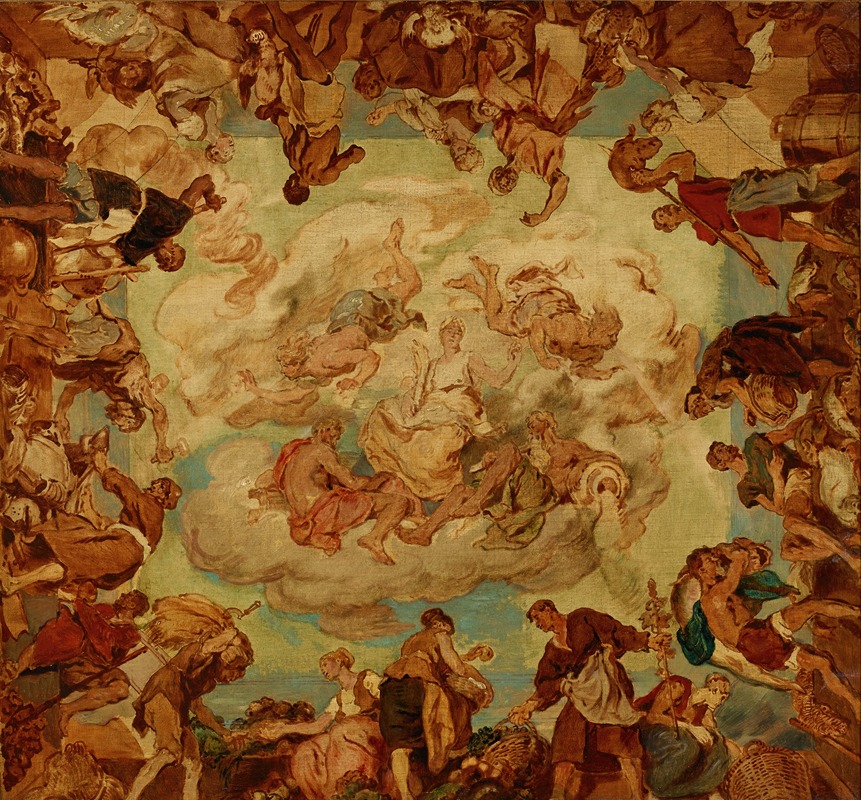
Die Fruchtbarkeit, umgeben von den vier Elementen
A hand-painted replica of Hans Canon’s masterpiece Die Fruchtbarkeit, umgeben von den vier Elementen, meticulously crafted by professional artists to capture the true essence of the original. Each piece is created with museum-quality canvas and rare mineral pigments, carefully painted by experienced artists with delicate brushstrokes and rich, layered colors to perfectly recreate the texture of the original artwork. Unlike machine-printed reproductions, this hand-painted version brings the painting to life, infused with the artist’s emotions and skill in every stroke. Whether for personal collection or home decoration, it instantly elevates the artistic atmosphere of any space.
Die Fruchtbarkeit, umgeben von den vier Elementen (Fertility Surrounded by the Four Elements) is a painting by the Austrian artist Hans Canon, whose real name was Johann Baptist Strašiřipka. Canon was born on March 15, 1829, in Vienna, Austria, and he became known for his historical and allegorical paintings. He studied at the Academy of Fine Arts in Vienna and later in Düsseldorf, Germany, where he was influenced by the Düsseldorf school of painting.
The painting "Die Fruchtbarkeit, umgeben von den vier Elementen" is an allegorical work that depicts the concept of fertility surrounded by the four classical elements: earth, water, air, and fire. This theme is a common motif in art history, symbolizing the interconnectedness of natural forces and their role in sustaining life.
In the center of the composition, the figure representing fertility is often depicted as a nurturing mother or a goddess-like figure, embodying the abundance and generative power of nature. Surrounding her are personifications of the four elements, each represented through symbolic imagery. Earth might be depicted with plants, fruits, or animals; water could be shown with rivers, seas, or aquatic creatures; air might be represented by birds or the sky; and fire could be symbolized by flames or the sun.
Hans Canon's style is characterized by his attention to detail and his ability to convey complex allegorical themes through vivid and dynamic compositions. His use of color and light enhances the symbolic meaning of the painting, creating a harmonious and balanced visual experience.
Canon's work was well-received during his lifetime, and he was considered one of the prominent artists of his era in Austria. He participated in several important exhibitions and received numerous commissions for public and private works. His paintings often reflect the cultural and intellectual currents of his time, blending classical themes with contemporary artistic techniques.
"Die Fruchtbarkeit, umgeben von den vier Elementen" is an example of Canon's skill in combining allegory with a realistic portrayal of figures and nature. The painting not only showcases his technical proficiency but also his ability to imbue his work with deeper philosophical and symbolic meanings.
Hans Canon passed away on September 12, 1885, in Vienna. His legacy continues to be appreciated by art historians and enthusiasts who recognize his contributions to 19th-century Austrian art. His works, including "Die Fruchtbarkeit, umgeben von den vier Elementen," remain significant for their artistic merit and their exploration of timeless themes.
Overall, "Die Fruchtbarkeit, umgeben von den vier Elementen" stands as a testament to Hans Canon's artistic vision and his ability to capture the essence of natural and allegorical subjects in a compelling and visually striking manner.







